#What Is Ecology Unit
Note
Have you thought about collabing with the creators of Clangen?
It would be cool? But from what I know, Clangen really tries to stick close to canon, moreso than I do. They wouldn't be looking to add my clan culture expansions or spirituality overhauls.
So like, sure, if they/a mod maker approached me with an idea or request. Otherwise I'm not sure what we'd collaborate about?
#I want to translate the name file into Clanmew at some point#But another large difference between BB and Clangen is ecological accuracy#Which is something I very intentionally set out to fix#Clangen takes place in a bizarro world mix of the us and uk like canon#The United Statedoms of Englerica#And more specifically canon takes place in the... California/Appalachia/Pennines.#Mostly Appalachia but they mentioned a 'Mountain Vole' in DOTC which is from Cali-fucken-Fornia iirc#Unless it was an accident and they meant ALPINE vole or pygmy vole...#Digressing please do not take any of this as a dig or insult about the ecology stuff. I 10000% understand why they don't do what I do#More than anyone in the world I understand why they would not be super obsessed with ecology#There's absolutely no replacement for coyotes in England. And there is no Gar.#So you can't even do The Garfield Joke if you do what I do#I reintroduced boars so there would be some accurate danger that isn't just offleash dogs#I'm proud of the research I do but it is a lot of work! Work they're already doing on coding a workable game.#Bone babble
69 notes
·
View notes
Note
I was reading through some of your diary style tags but are you an environmental scientist? ESRM unite~~
Yeah. I'm an aspiring astrobiologist. I'm interested in evolution and the origins of life. I currently work with terrestrial cyanobacteria (those found in desert soil). I'm in a lab that's too Ecology focused rn and im not an Ecologists. I like the little annoying cellular function stuff and I wanna get more into genetics
#i have have an undergrad degree in biological thru and Environmental science department and#a masters in plant and environmental sciences. tho it was more microbial Ecology and biogeochemical cycles focused#but when asked: r u a scientist? i cringe away lmao#but yeah im an environmental scientist. i think abt how the abiotic factors shape microbial communities and how they function#but yes! unite! im curiosity what u study#if u wanna chat u can message me thru my alt account handful-of-fish-bones#unrelated
25 notes
·
View notes
Text
icb im in my 3rd year and i can barely name the plants..
#they should add this in the curriculum AND LESSEN MY UNITS ON PHYSICS AND CHEMISTRY#we've been studying that for 3 years now at least add more units on ecology😭#also what happened to the animals...#we had zoology in first year and that's it
0 notes
Text
Book Review: One: The Story of the Ultimate Myth by Mansoor Khan
Far from the world of Bollywood’s unreal, commercial romances, Mansoor Khan travels through time and space to talk about ecological destruction and evolution in a philosophical yet contemporary manner. The master of storytelling remains true to his art—his unique approach to climate crisis, environmental degradation, ignorance, greed forces us to put on our thinking cap and question our…

View On WordPress
#books#CLIMATE CHANGE#ecology#environmental crisis#Holistic Wellbeing#how do we reverse climate change#philosophy#Travel Feature#what is the need for United Nations SDGs?
0 notes
Text
There was this post a while ago where somebody was saying that Cheetahs aren't well suited to Africa and would do well in Midwestern North America, and it reminded me of Paul S. Martin, the guy I'm always pissed off about.
He had some good ideas, but he is most importantly responsible for the overkill hypothesis (idea that humans caused the end-Pleistocene extinctions and that climate was minimally a factor) which led to the idea of Pleistocene rewilding.
...Basically this guy thought we should introduce lions, cheetahs, camels, and other animals to North America to "rewild" the landscape to what it was like pre-human habitation, and was a major advocate for re-creating mammoths.
Why am I pissed off about him? Well he denied that there were humans in North America prior to the Clovis culture, which it's pretty well established now that there were pre-Clovis inhabitants, and in general promoted the idea that the earliest inhabitants of North America exterminated the ecosystem through destructive and greedy practices...
...which has become "common knowledge" and used as evidence for anyone who wants to argue that Native Americans are "Not So Innocent, Actually" and the mass slaughter and ecosystem devastation caused by colonialism was just what humans naturally do when encountering a new environment, instead of a genocidal campaign to destroy pre-existing ways of life and brutally exploit the resources of the land.
It basically gives the impression that the exploitative and destructive relationship to land is "human nature" and normal, which erases every culture that defies this characterization, and also erases the way indigenous people are important to ecosystems, and promotes the idea of "empty" human-less ecosystems as the natural "wild" state.
And also Martin viewed the Americas' fauna as essentially impoverished, broken and incomplete, compared with Africa which has much more species of large mammals, which is glossing over the uniqueness of North American ecosystems and the uniqueness of each species, such as how important keystone species like bison and wolves are.
It's also ignoring the taxa and biomes that ARE extraordinarily diverse in North America, for example the Appalachian Mountains are one of the most biodiverse temperate forests on Earth, the Southeastern United States has the Earth's most biodiverse freshwater ecosystems, and both of these areas are also a major global hotspot for amphibian biodiversity and lichen biodiversity. Large mammals aren't automatically the most important. With South America, well...the Amazon Rainforest, the Brazilian Cerrado and the Pantanal wetlands are basically THE biodiversity hotspot of EVERYTHING excepting large mammals.
It's not HIM I have a problem with per se. It's the way his ideas have become so widely distributed in pop culture and given people a muddled and warped idea of ecology.
If people think North America was essentially a broken ecosystem missing tons of key animals 500 years ago, they won't recognize how harmful colonization was to the ecosystem or the importance of fixing the harm. Who cares if bison are a keystone species, North America won't be "fixed" until we bring back camels and cheetahs...right?
And by the way, there never were "cheetahs" in North America, Miracinonyx was a different genus and was more similar to cougars than cheetahs, and didn't have the hunting strategy of cheetahs, so putting African cheetahs in North America wouldn't "rewild" anything.
Also people think its a good idea to bring back mammoths, which is...no. First of all, it wouldn't be "bringing back mammoths," it would be genetically engineering extant elephants to express some mammoth genes that code for key traits, and second of all, the ecosystem that contained them doesn't exist anymore, and ultimately it would be really cruel to do this with an intelligent, social animal. The technology that would be used for this is much better used to "bring back" genetic diversity that has been lost from extant critically endangered species.
I think mustangs should get to stay in North America, they're already here and they are very culturally important to indigenous groups. And I think it's pretty rad that Scimitar-horned Oryx were brought back in their native habitat only because there was a population of them in Texas. But we desperately, DESPERATELY need to re-wild bison, wolves, elk, and cougars across most of their former range before we can think about introducing camels.
2K notes
·
View notes
Text
Was Krypto Jor-El's dog? Or did their family have another pet?
Because think about it. Thanks to Cujo, we KNOW animals with unfinished business or strong attachments stay behind. We ALSO know from nigh COUNTLESS videos on the internet that pets get REALLY attached to pregnant moms and by extention, the new pack members.
Krpton was an Alien planet. Just because SOME of the animals there looked similar to earth animals, doesn't mean ALL of them do. Nor does it mean they ONLY domesticated dog like creatures or cat like creatures. They could have anything from vaguely bear-like to fox-ish to small moose but with more teeth.
It was a completely different ecology.
And Jor-El? Him and his wife had a CHOICE to make. They had A pod. Singular. Tiny. Not a ship, not an escape pod, not even a refurbished shipping container. Just a pod with life support and all the information about Krypton they could fit. A guidance system that, gods willing, would see their son to a safe and sympathetic planet to be raised by kind people.
THEY couldn't even fit.
How in the gods name would a large pet? Even a mid sized pet. Let us assume, for this prompt, that being scientists of high position? Pays or allocates pretty well. They have the room. The resources. When they got married, Jor-El's wife REALLY wanted a cub or pup or what have you, of some large-ish animal breed.
The equivalent of an earth mastiff dog. Just an Absolute UNIT. Used to be gaurds and working beasts, now more athletic pets then anything. Known to be great protecters of Their People.
And well... Jor-El WAS already starting to notice some things that were making him Less Than Popular... probably nothing (he had naively hoped, at the time.) But better to have a Just In Case. Sure, honey. Let's get one!
And they LOVED Snookums.
Snookums ADORED them AND the baby! Kal-El basically NEVER left Snookums sight. He slept beneath Kal's crib. Followed them everywhere they went, when they were holding Kal. Planted himself like Kal's Sworn Protector as the baby drooled all over his fur. It was the cutest thing EVER.
But then?
No. Dear Gods No. Please... Please let him be wrong!
He's not. He never is. He is too careful with his calculations. To the point of near paranoia. Maybe they can stop it. If they DO something. Act IMMEDIATELY...
But...
Well, we all now how that story ends. Two people, standing on a launch pad, tears streaming down their smiling faces, trying to memorize the last moment they'll ever see their son. Praying this will be ENOUGH.
That they aren't trading one terrible death for another.
Watching their son disappear into the sky. Flying home as the ground groan as shakes, trees toppling and people screaming. Panicking. Dying pointless deaths that could have been stopped.
Walking into the home that should have been where they spent their whole live. Where, in a way, they WILL.
Knowing they won't grow old.
Sitting on the floor with their confused, frantic, pet as fire starts to light up the horizon. As the ground shakes violently on last, terrible time. Knowing the lethal heat will hit them before their ears ever register the sound.
It's Over.
But! Where is Snookum's Baby Kal!?
They are scared, confused, and everything is LOUD AND RUMBLY. Very Bad. Don't like that. Their ADULTS come back home. BUT NOT THEIR BABY. Where is Baby Kal?! Snookums is a GOOD Boy and a GREAT Protector. It is in his blood.
Something BAD is happening.
Has? Happened?
Everything is GREEN.
But that does not MATTER. Snookums can not REST. Can not stay here! They must Sniff and search and hunt! Look for Kal! Who is SMALL and needs to be protected! What if he is HURT? How will he SLEEP!? With no Snookums to cuddle for nap time!?
But the universe is large. And there is no smell in space. (Well, there ARE. But they are Stinky Gasses and those do not help Snookums.) So it takes lots and lots of time. Until! He meets a glowing blue dog!
A hopeful corgi? What is a corgi? Irrelevant! The hopeful one knows of Snookums' Kal! Oh, thank you small friend! You indeed DO give hope! We shall go at once and Kal shall be safe and with family once more!
Meanwhile? Danny? Wakes up to a sticky note on his forehead from Clockwork. "Bring Cujo with you to meet the Justic League"? What? WHY? He loves the pup, but Cujo has never behaved himself in a formal setting ONCE in his doggy LIFE. Danny is trying to make a good first impression!
But... Clockwork doesn't Post-It lightly...
Guess he's breaking out the doggy bow ties. Great. Wonder what THIS is about...
Four and a half hours later? Watching Cujo playfully wrestle with the ghost of what HAS to be a Kryptonian... gonna saaaaay.... Bear-fox? Which nearly TACKLED Superman, freaked the ENTIRE Justice League out, and nearly got him STABBED by Etrigon. Yeah. That was a good call.
Congratulations on your new ghost pet, Superman. No, he's not leaving. It just kinda happens sometimes. It's how Danny got Cujo. Wanna do pet playdates?
@hdgnj @ailithnight @mutable-manifestation @dcxdpdabbles @nerdpoe
#dpxdc#dp x dc#dc x dp#dcxdp#dc x dp prompt#Kryptonian pets can be ghosts too#snookums is a LOYAL maybe bear ghost
736 notes
·
View notes
Text
Existence Value: Why All of Nature is Important Whether We Can Use it or Not
I spend a lot of time around other nature nerds. We’re a bunch of people from varying backgrounds, places, and generations who all find a deep well of inspiration within the natural world. We’re the sort of people who will happily spend all day outside enjoying seeing wildlife and their habitats without any sort of secondary goal like fishing, foraging, etc. (though some of us engage in those activities, too.) We don’t just fall in love with the places we’ve been, either, but wild locales that we’ve only ever seen in pictures, or heard of from others. We are curators of existence value.
Existence value is exactly what it sounds like–something is considered important and worthwhile simply because it is. It’s at odds with how a lot of folks here in the United States view our “natural resources.” It’s also telling that that is the term most often used to refer collectively to anything that is not a human being, something we have created, or a species we have domesticated, and I have run into many people in my lifetime for whom the only value nature has is what money can be extracted from it. Timber, minerals, water, meat (wild and domestic), mushrooms, and more–for some, these are the sole reasons nature exists, especially if they can be sold for profit. When questioning how deeply imbalanced and harmful our extractive processes have become, I’ve often been told “Well, that’s just the way it is,” as if we shall be forever frozen in the mid-20th century with no opportunity to reimagine industry, technology, or uses thereof.
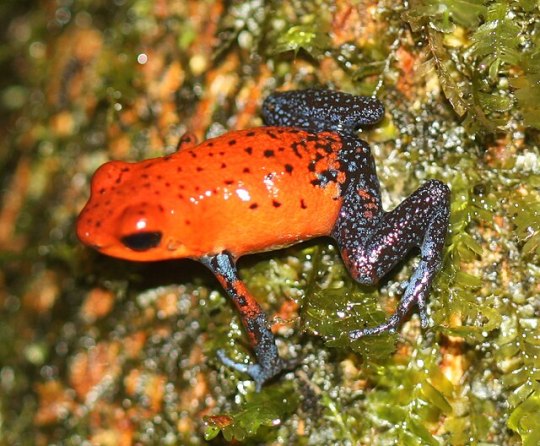
Moreover, we often assign positive or negative value to a being or place based on whether it directly benefits us or not. Look at how many people want to see deer and elk numbers skyrocket so that they have more to hunt, while advocating for going back to the days when people shot every gray wolf they came across. Barry Holstun Lopez’ classic Of Wolves and Men is just one of several in-depth looks at how deeply ingrained that hatred of the “big bad wolf” is in western mindsets, simply because wolves inconveniently prey on livestock and compete with us for dwindling areas of wild land and the wild game that sustained both species’ ancestors for many millennia. “Good” species are those that give us things; “bad” species are those that refuse to be so complacent.
Even the modern conservation movement often has to appeal to people’s selfishness in order to get us to care about nature. Look at how often we have to argue that a species of rare plant is worth saving because it might have a compound in it we could use for medicine. Think about how we’ve had to explain that we need biodiverse ecosystems, healthy soil, and clean water and air because of the ecosystem services they provide us. We measure the value of trees in dollars based on how they can mitigate air pollution and anthropogenic climate change. It’s frankly depressing how many people won’t understand a problem until we put things in terms of their own self-interest and make it personal. (I see that less as an individual failing, and more our society’s failure to teach empathy and emotional skills in general, but that’s a post for another time.)
Existence value flies in the face of all of those presumptions. It says that a wild animal, or a fungus, or a landscape, is worth preserving simply because it is there, and that is good enough. It argues that the white-tailed deer and the gray wolf are equally valuable regardless of what we think of them or get from them, in part because both are keystone species that have massive positive impacts on the ecosystems they are a part of, and their loss is ecologically devastating.
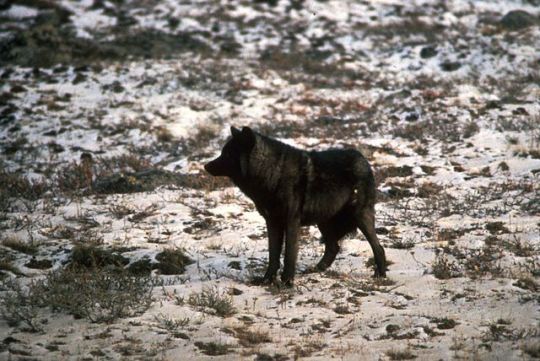
But even those species whose ecological impact isn’t quite so wide-ranging are still considered to have existence value. And we don’t have to have personally interacted with a place or its natural inhabitants in order to understand their existence value, either. I may never get to visit the Maasai Mara in Kenya, but I wish to see it as protected and cared for as places I visit regularly, like Willapa National Wildlife Refuge. And there are countless other places, whose names I may never know and which may be no larger than a fraction of an acre, that are important in their own right.
I would like more people (in western societies in particular) to be considering this concept of existence value. What happens when we detangle non-human nature from the automatic value judgements we place on it according to our own biases? When we question why we hold certain values, where those values came from, and the motivations of those who handed them to us in the first place, it makes it easier to see the complicated messes beneath the simple, shiny veneer of “Well, that’s just the way it is.”
And then we get to that most dangerous of realizations: it doesn’t have to be this way. It can be different, and better, taking the best of what we’ve accomplished over the years and creating better solutions for the worst of what we’ve done. In the words of Rebecca Buck–aka Tank Girl–“We can be wonderful. We can be magnificent. We can turn this shit around.”
Let’s be clear: rethinking is just the first step. We can’t just uproot ourselves from our current, deeply entrenched technological, social, and environmental situation and instantly create a new way of doing things. Societal change takes time; it takes generations. This is how we got into that situation, and it’s how we’re going to climb out of it and hopefully into something better. Sometimes the best we can do is celebrate small, incremental victories–but that’s better than nothing at all.
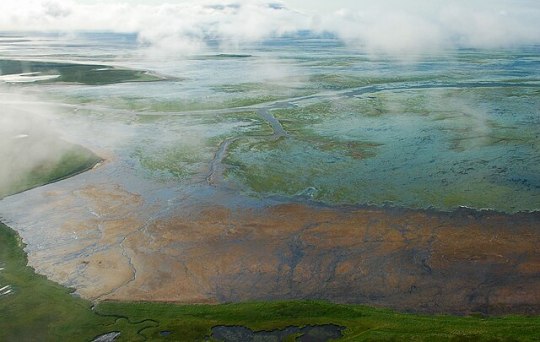
Nor can we just ignore the immensely disproportionate impact that has been made on indigenous and other disadvantaged communities by our society (even in some cases where we’ve actually been trying to fix the problems we’ve created.) It does no good to accept nature’s inherent value on its own terms if we do not also extend that acceptance throughout our own society, and to our entire species as a whole.
But I think ruminating on this concept of existence value is a good first step toward breaking ourselves out first and foremost. And then we go from there.
Did you enjoy this post? Consider taking one of my online foraging and natural history classes or hiring me for a guided nature tour, checking out my other articles, or picking up a paperback or ebook I’ve written! You can even buy me a coffee here!
#nature#natural history#ecology#wildlife#animals#environment#environmentalism#conservation#existence value#deep ecology#science#scicomm#environmental philosophy#climate change
562 notes
·
View notes
Text
Mrigashira: Obsessive & Obsessed Over
TW: suicide, rape, death, murder, abuse
This is part 2 of my Mrigashira series. For part 1, go here.
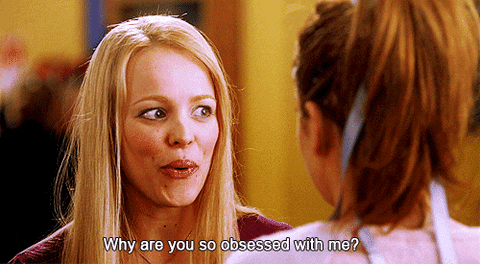
Rachel McAdams, Mrigashira Moon
I want to explore the nature of Mrigashira in relation to the obsessiveness it inspires in others and often how obsessive it can be. Mrigashira's mythology is tied to escape, changing form and running away. As I discussed extensively in part 1, truth-telling is part of a Mrigashira native's purpose. They are simply built that way. This is also a key part of the reason why others tend to be so magnetically drawn to them and are often driven to the point of obsession for them.
Mrigashira possesses a serpent yoni and serpents are known to represent transformation and renewal. The Kundalini is represented by a coiled serpent. Serpents have always been associated with temptation, dangerous allure, truth unveiling and change. People are drawn to Mrigashira natives because unconsciously they want to embody the freedom and honesty of these Martian individuals but having so many people pulling at your energy means you lose the sense of self and feel corrupted by their influence, to maintain their purity most Mrigashira natives live very reclusive lives. And this is for their own safety and well-being as well, the more these natives allow themselves to be projected on to by others, the more hatred they receive because of the collective shadow that is put up against them. Imagine being in the presence of a serpent all the time? Its bound to make others uneasy and restless, no matter how friendly, how inviting or welcoming they seem, you may be attracted to them but you do not want to be around them constantly, its too unnerving.
Similarly serpents belong to their burrows (or wherever they live idk lmao) not out in the open among people. Not only because its a threat to their very existence (people see a snake, they try to kill it) but because they are wired and conditioned to thrive in a very different sort of environment.
The allure of the serpent is very attractive but its constant in your face existence is not. Same goes for the veil lifting, truth revealing nature of these natives. Honesty is rare and so appreciated but imagine the truth staring you in the face all day everyday, you would go mad. There is a reason why ignorance is considered bliss, its because you need that veil over reality to keep yourself sane, if you saw things and perceived them as they are, you would drive yourself to lunacy. Most people are not prepared to receive and understand that kind of truth, its only after a certain stage in your spiritual journey that you are initiated into it.
There is a reason why the third eye chakra is the second highest chakra in the hierarchy (root chakra at the bottom from which you ascend upwards all the way up to your crown chakra). The third eye chakra is sight which allows us to see things as they are. The crown chakra which is the final chakra is the ability to understand things as they are. To understand we must first have clarity of vision and to have that we must ascend above all the other chakras.
Mrigashira natives project the truth and because of this, they are torn apart by others often. These natives represent the shadow of the gazer. Serpents beckoning for change, asking you to shed your shadow, and your inhibitions and renew yourself. This can be very painful and scary, as shadow work is always very difficult to do but instead of understanding that what we hate in others is a reflection of our shadow, most people just hate the Messenger themselves.

Petra Kelly, Mrigashira Moon, Vishaka Ketu (the man photographed next to her is her husband)
She was a founding member of the German Green Party and was a prominent activist in the 1980s who united ecological concerns with disarmament, social justice, and human rights. She was one of the OG ecofeminists imo
On 19 October 1992, the decomposed bodies of Kelly and her partner, ex-general and Green politician Gert Bastian (born 1923), were discovered in the bedroom of her house in Bonn by police officials after they received a call from both Bastian's wife and Kelly's grandmother who reported that they had not heard from either Bastian or Kelly for a few weeks. The police determined that Kelly was shot dead while sleeping by Bastian, who then killed himself. She was 44, he was 69. The last time anyone heard from the couple was on 30 September 1992 when Kelly sent a parcel to her grandmother.
Obviously, no one knows what transpired between the two or what might have led to this tragic end but being killed by your partner is unfortunately a pattern in the lives of many Mrigashira natives.
Obviously, not every Mrigashira will experience this so please do not worry or hyperventilate!!!!
One's spouse is a reflection of our subconscious, we are driven to the point of madness and murder when they project the truth of our subconscious back to us. We see the darkness, we see the ugliness and we feel violated. Obviously this is just one explanation and there could be numerous others.
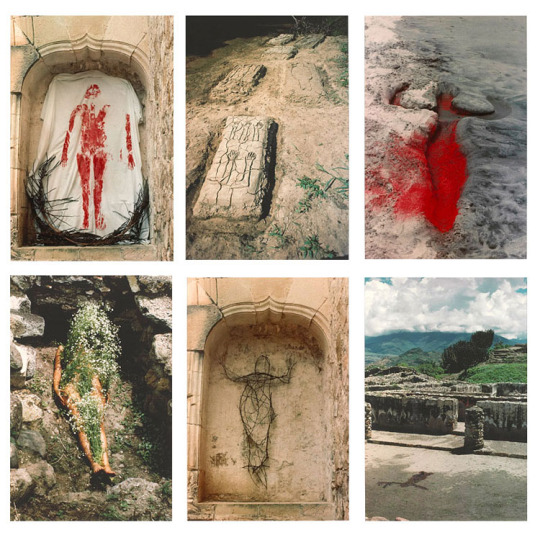
The iconic ecofeminist artist Ana Mendieta was Vishaka Sun, Mrigashira Moon
Ana Mendieta died on September 8, 1985, in New York City, after falling from her 34th-floor apartment in Greenwich Village at 300 Mercer Street. She lived there with her husband of eight months, minimalist sculptor Carl Andre. The circumstances surrounding her death have been the subject of controversy. She fell 33 stories onto the roof of a deli. Just before her death, neighbours heard the couple arguing violently. The neighbours heard Mendieta scream out "no" right before her death, and Andre had scratches all over his face. There were no eyewitnesses to the events that led up to Mendieta's death. A recording of Andre's 911 call showed him saying: "My wife is an artist, and I'm an artist, and we had a quarrel about the fact that I was more, eh, exposed to the public than she was. And she went to the bedroom, and I went after her, and she went out the window." During three years of legal proceedings, Andre's lawyer described Mendieta's death as a possible accident or a suicide. After a nonjury trial, Andre was acquitted of second-degree murder in February 1988.
There are many parallels between Petra & Ana's lives. From the fact that both of them were Mrigashira Moon to the fact that both their husbands worked in the same field as them and that both of them were ecofeminists.
From what we know about the circumstances surrounding Ana's death, it's pretty clear that Carl did it and even reading about what he said on his 911 call is so??? like that sounds like some classic gaslighting and I'm inclined to believe it was probably over his jealousy of how she was a better artist than him. Petra's story we may never know but its not a stretch to think that something similar may have happened between her and that oldie.

Lana Turner, Mrigashira Rising
In 1957, while Turner was filming a movie, she had begun receiving phone calls and flowers on the set from mobster Johnny Stompanato (pictured with her above).
He pursued Turner aggressively, sending her various gifts. Turner was "thoroughly intrigued" and began casually dating him. After a friend informed her of who Stompanato actually was, she confronted him and tried to break off the affair. Stompanato was not easily deterred, and over the course of the following year, they carried on a relationship filled with violent arguments, physical abuse and repeated reconciliations. Turner would also claim that on one occasion he drugged her and took nude photographs of her while unconscious, potentially to use as blackmail.
I don't know if I have posted about it before but being violated or having your sexual intimacy exposed?? is also a Mrigashira theme. Ex: Jennifer Lawrence, Mrig Moon whose private pictures leaked in 2014, Pamela Anderson, Mrig Rising whose sex tape leaked in the 90s.
In 1957, Stompanato visited Turner on set in London and when she asked him to leave, he threatened her with a gun.
On the evening of March 26, 1958, Turner attended the Oscars. Stompanato, angered that he did not attend with her, awaited her return home that evening, whereupon he physically assaulted her. Around 8:00 p.m. on Friday, April 4, Stompanato arrived at Turner's rented home at 730 North Bedford Drive in Beverly Hills. The two began arguing heatedly in the bedroom, during which Stompanato threatened to kill Turner, her daughter Cheryl and her mother. Fearing that her mother's life was in danger, Cheryl – who had been watching television in an adjacent room – grabbed a kitchen knife and ran to Turner's defence. Stompanato died from stab wounds to his stomach.
This whole episode is very Mrigashira coded but thankfully Lana Turner survived and her abuser died.

Maurizio Gucci- Mrigashira Moon, Punarvasu Rising
If you've watched House of Gucci, you already know how this unfolds.
On 27 March 1995, Gucci was shot by a hired hitman on the steps outside his office as he arrived at work. His former wife Patrizia Reggiani was convicted in 1998 of arranging the killing. According to prosecutors, Reggiani's motives were a mixture of jealousy, money, and resentment towards her former husband. She served 18 years in prison and was released in October 2016.
I do believe all these people were murdered/attacked because of the resentment and envy their partners felt towards them even though due to the tragic circumstances there is very little proof of it.
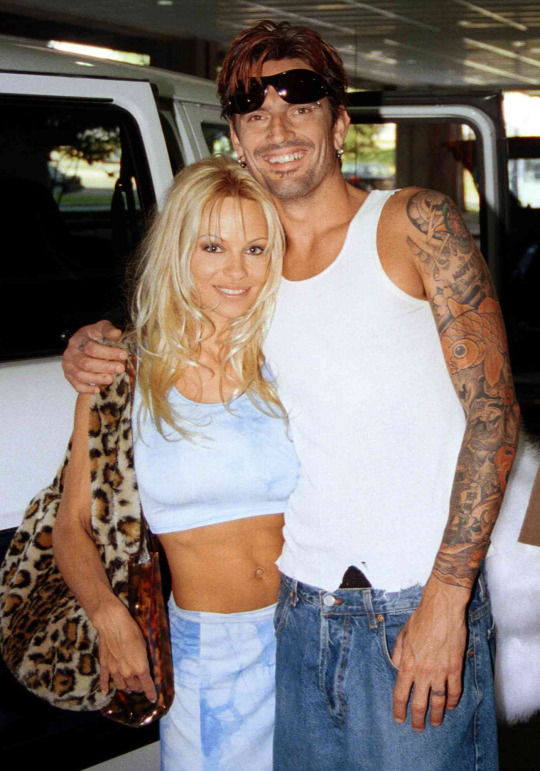
Pamela Anderson, Mrigashira Rising
The Baywatch star married drummer Tommy Lee in 1995, after knowing him for just four days. Their stormy marriage lasted just 3 years, and in that time the Mötley Crüe member served 4 months in jail for domestic abuse against Anderson. It’s reported that during this incident Lee kicked Pamela while she was holding their son Dylan. But even though Anderson had helped to convict Lee, she was waiting for him when he came out and the pair briefly reconciled. Now, though, they’ve gone their separate ways.
A spiritual reason behind why people abuse others is like I said before on this post, they see their shadow reflected in you. The most powerful life saving thing you can do for yourself in these instances when a relationship (does not have to be romantic) takes a sour and dangerous turn is to LEAVE immediately. The longer you stay, the more you forgive/ignore them and overlook their tendencies, the darker the shadow grows because you are letting yourself submit to it. You have to understand that certain things cannot be talked through or come to an understanding about, like how a snake sizes you up before swallowing you whole, the initial triggers are proof of what their darkness is pulling them towards. When you dont recognise that as a sign and take your leave, they are even more agonised and disturbed because now they see all their ugliness reflected in you, how cruel and uncaring they are, everytime they look at you, they see you project their worst traits back to them. Have you noticed how men are always 100x more cruel to the woman who is extremely kind to him and puts up with him? He is not moved by her kindness to treat her better, he treats her worse because she reminds him of how much of a piece of shit he is, he sees his own failures as a human being reflected in her. A woman who does not put up with shit and leaves and cuts them off is also severing these spiritual ties which in a sense "liberates" the man from his shadow. This is why its so important to know your worth. You risk your own life by not knowing it. This is also the reason why men keep chasing the women who dont put up with shit, because theyre not projecting their shadow back to them.

Brooke Shields, Mrigashira Moon & Venus
Brooke was obsessed over by absolutely everyone in her youth. They sexualized a goddamn child and made money from it. Here's a very uncomfortable clip of Susan Sarandon talking about 11yr old Brooke.
I don't want to elaborate too much because it makes me uncomfortable af but read about Brooke's life and you'll see how Mrigashira's many themes unfolded in her life (toxic mom included)

Dante Alighieri, Mrigashira stellium (Sun, Mercury & Rising)
Now that we've discussed how obsession with Mrigashira women ends in tragedy, lets see how Mrigashira natives themselves can be very obsessive in love.
Dante first met Beatrice, who he has described as the love of his life when they were children. She died at 24yrs old and Dante & her were never married nor did they ever even have a conversation but Dante was passionately, madly obsessed with her. He wrote about her A LOT. (imagine writing a shit ton of poetry and prose about a woman you've never even talked to?? haha 👁️👄👁️)
They met twice in their life, he married another woman yet he wrote about Beatrice continuously and exalted her to the high heavens
Dante and Beatrice never even kissed. For Dante, though, it didn’t matter that his love for Beatrice remained unconsummated. Why? Because merely the act of loving her was enough. Loving someone was its own justification.
How could this be? It connects to how Dante’s understanding of his love for Beatrice evolved. By the end of Vita nuova, Dante has come to understand that his youthful love was superficial. Instead, he realizes that his love for her is his most direct experience of the divine nature of love. Beatrice, after all, was “sent from Heaven,” a gift from god. By loving her — even if it’s from afar — Dante is himself purified, brought to a new spiritual existence, and brought closer to god. This is one reason why the work is titled Vita nuova: Dante’s love of Beatrice grants him a new life.

Franz Kafka- Mrigashira Stellium (Moon, Mercury and Venus)
Kafka's Letters to Milena are very popular but what's even crazier is their relationship.
Milena was a translator. In 1919 she discovered a short story (The Stoker) by Prague writer Franz Kafka, and wrote to him to ask for permission to translate it from German to Czech. The letter launched an intense and increasingly passionate correspondence. Milena and Kafka met twice: they spent four days in Vienna together and later a day in Gmünd. Eventually, Kafka broke off the relationship, partly because Milena as unable to leave her husband, and their almost daily communication ceased abruptly in November 1920. They meant so much to each other, however, that they did exchange a few more letters in 1922 and 1923 (and Kafka turned over to Milena his diaries at the end of his life). Kafka died in 1924.
Mrigashira men 🤝passionate love affair with a women they've met twice
“You are the knife I turn inside myself; that is love. That, my dear, is love.”
― Franz Kafka, Letters to Milena
“Dear Milena,
I wish the world were ending tomorrow. Then I could take the next train, arrive at your doorstep in Vienna, and say: “Come with me, Milena. We are going to love each other without scruples or fear or restraint. Because the world is ending tomorrow.” Perhaps we don’t love unreasonably because we think we have time or have to reckon with time. But what if we don't have time? Or what if time, as we know it, is irrelevant? Ah, if only the world were ending tomorrow. We could help each other very much.”
― Franz Kafka, Letters to Milena
(brb im ugly cryinggg 😭😩😭kafka was such a loverboy)

C.S Lewis, Mrigashira Moon
Joy was a feisty Jewish divorced single mother from the Bronx. Lewis, 17 years her senior, was a lifelong confirmed bachelor (he wrote The Chronicles of Narnia) . They exchanged vows at her hospital bedside after a devastating diagnosis of metastasized breast cancer. Joy spent her final days dying in the arms of her most unlikely husband.
Joy had bone cancer and wasn’t expected to live; miraculously, they had three years together before she finally succumbed to cancer at age 45.
The loss devastated C.S. Lewis (as one can tell by reading A Grief Observed, one of his most heart-wrenching, personal books). Perhaps the biggest lesson one can take away from the love between C.S. Lewis and Joy Davidman was their willingness to love each other, however risky, however unsafe it may be. Lewis expressed grief, shock, and dismay over his wife’s death, but he never expressed regret over marrying her, never wished that he had taken the “safe” way.
Lewis summed this up beautifully in his poem, As the Ruin Falls:
"All this is flashy rhetoric about loving you.
I never had a selfless thought since I was born.
I am mercenary and self-seeking through and through:
I want God, you, all friends, merely to serve my turn.
Peace, re-assurance, pleasure, are the goals I seek,
I cannot crawl one inch outside my proper skin:
I talk of love --a scholar's parrot may talk Greek--
But, self-imprisoned, always end where I begin.
Only that now you have taught me (but how late) my lack.
I see the chasm.
And everything you are was making
My heart into a bridge by which I might get back
From exile, and grow man.
And now the bridge is breaking.
For this I bless you as the ruin falls.
The pains You give me are more precious than all other gains."
They were together for 3 years during which she was very sick and bedridden, yet his love for her is soo profound and he wrote extensively about how much her death devastated him :((
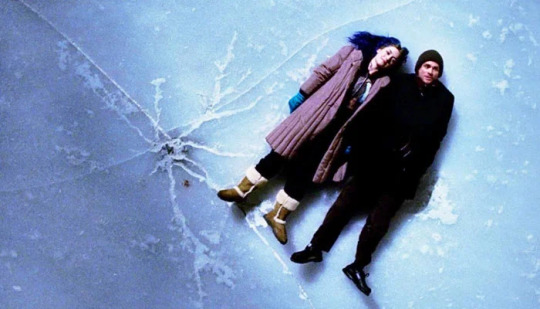
Jim Carrey, Mrigashira Moon starred in Eternal Sunshine of the Spotless Mind (directed by Michel Gondry, Punarvasu Rising) and this movie is an ode to the eternal nature of love. Two individuals whose memories are altered repeatedly to rid them of one another keep meeting each other again and again. Its such a beautiful story of how undying love is.
I think Punarvasu & Mrigashira natives are connected to each other in some way.

In this interview, Stephen Colbert (Mrigashira Moon) asks Keanu Reeves (Punarvasu Moon) "What happens when we die?" to which Keanu responds "I know that the people who love us, will miss us". Its a very earnest answer more so considering how both Stephen and Keanu have lost so many people in their lives. Keanu's ex gf died in a car accident a year after they had a stillborn daughter. Colbert lost his father and 2 brothers to a plane crash when he was 10.
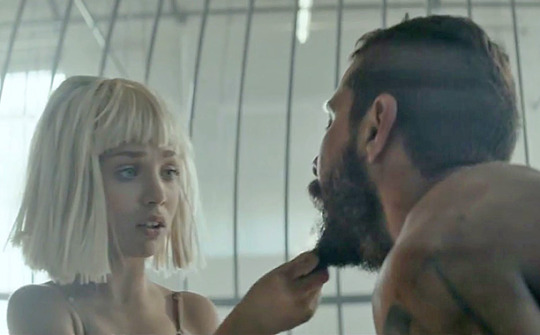
In Sia's (Mrigashira Moon) MV for Elastic Heart, Maddie Ziegler (Punarvasu Moon) and Shia LaBeouf (Mrigashira Sun) are depicted as Sia's two selves who are warring with each other inside a cage, in the end Maddie makes it out of the cage while Shia is stuck inside. Sia said she wrote this song about a failing relationship so the MV can be understood as a symbolic representation of two sides of Sia battling whether to leave or stay in this relationship. Its particularly poignant to me that the person who makes it out alive is a Punarvasu native.
Its also quite well known how creepily obsessed Sia has been with Maddie over the years.

Hugh Dancy (Mrigashira Sun) played Will on Hannibal where the titular character was played by Mads Mikkelsen (Vishaka Moon)
The two share an intense toxic violent emotional relationship. He tries to kill him but he also saves him.
I think Mars-Jupiter relationships are often this way, intense and ultimately doomed because the two can never stay together.
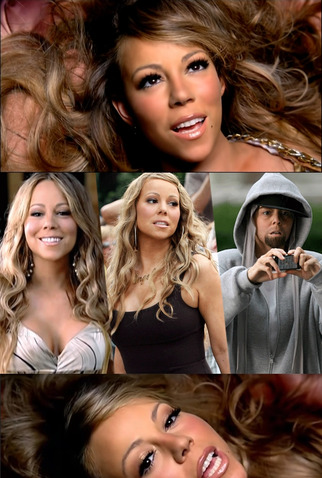
Eminem, Saturn in Mrigashira atmakaraka (Chitra Sun, Dhanishta Moon) allegedly had a relationship with Mariah Carey (Punarvasu Moon) in the 2000s and repeatedly referenced her in his songs whilst she stayed quiet about him and often denied their relationship.
In 2002 Eminem rapped in his song Superman "What you trying be? My new wife? / What, you Mariah? Fly through twice.” On When the Music Stop, he said, “What the f–k you take me for, a joke? You smoking crack? ‘Fore I do that, I’d beg Mariah to take me back.”
In the same year, Mariah released a song called Clown in which she sang, “You should’ve never intimated we were lovers when you know very well we never even touched each other.”
She explained, “I talked to him, I spoke to him a few times, whatever,” she said at the time. “But in terms of me having an intimate relationship? With men, I can name them all on one hand, and he’s not one of them. I hung out with him, I spoke to him on the phone. I think I was probably with him a total of four times. And I don’t consider that dating somebody.”
Eminem went on talking about her obsessively for yeaaarsss (that's the Mrigashira in him/all his Mars energy in general, Martians are a whole new brand of obsessed)
In 2009, Eminem rapped in Bagpipes from Baghdad
“Mariah, whatever happened to us? Why did we have to break up?Nick Cannon, you pr–k, I wish you luck with the f–kin’ whore.”
Mind you that he himself admitted that they only dated for 6 months in 2002, 7 WHOLE YEARS LATER he is still singing about her, he's clearly still obsessed with her but he's also an asshole for speaking about her in such disparaging terms.
And that's when Mariah Carey dropped her iconic song Obsessed
in 2019, 17 years later, Eminem was still rapping about her lol
"I know me and Mariah didn’t end on a high note / But that other dude’s whipped — that p—y got him neutered, tried to tell him this chick’s a nut job before he got his jewels clipped / Almost got my caboose kicked / Fool, quit / You not gonna do s–t / I let her chop my balls off too before I lose to you, Nick.”
Sorry for spilling all the tea but I just think its soooo funny. Its no Dante & Beatrice but oh man lol
Through this example we see a negative toxic manifestation of Mrigashira's obsession and devotion to a partner.

Prince William, Mrigashira Sun and Princess Catherine, Punarvasu Moon are another Mrig-Punarvasu/Jupiter pairing I can think of
As we have seen from Eminem, Mrigashira men can often be violent and abusive
Johnny Depp-Mrigashira Sun, Kanye West- Mrigashira Sun, Salman Rushdie Mrigashira Sun & Moon, Shia LaBeouf- Mrigashira Sun have all been accused of abuse by their partners.
Obsession isn't a good thing and very few Mrigashira men are like Dante in today's world.
I hope this was interesting & informative.xx
#astrology observations#astrology notes#sidereal astrology#nakshatras#astrology#vedic astro notes#astro notes#vedic astrology#astro observations#astroblr#mrigashira#mars#jupiter
225 notes
·
View notes
Text
Introduction To Supporting Sustainable Agriculture For Witches and Pagans

[ID: An image of yellow grain stocks, soon to be harvested. The several stocks reach towards a blurred open sky, focusing the camera on he grains themselves. The leaves of the grains are green and the cereals are exposed].
PAGANISM AND WITCHCRAFT ARE MOVEMENTS WITHIN A SELF-DESTRUCTIVE CAPITALIST SOCIETY. As the world becomes more aware of the importance of sustainability, so does the duty of humanity to uphold the idea of the steward, stemming from various indigenous worldviews, in the modern era. I make this small introduction as a viticulturist working towards organic and environmentally friendly grape production. I also do work on a food farm, as a second job—a regenerative farm, so I suppose that is my qualifications. Sustainable—or rather regenerative agriculture—grows in recognition. And as paganism and witchcraft continue to blossom, learning and supporting sustainability is naturally a path for us to take. I will say that this is influenced by I living in the USA, however, there are thousands of groups across the world for sustainable agriculture, of which tend to be easy to research.
So let us unite in caring for the world together, and here is an introduction to supporting sustainable/regenerative agriculture.
A QUICK BRIEF ON SUSTAINABLE AGRICULTURE
Sustainable agriculture, in truth, is a movement to practise agriculture as it has been done for thousands of years—this time, with more innovation from science and microbiology especially. The legal definition in the USA of sustainable agriculture is:
The term ”sustainable agriculture” (U.S. Code Title 7, Section 3103) means an integrated system of plant and animal production practices having a site-specific application that will over the long-term:
A more common man’s definition would be farming in a way that provides society’s food and textile needs without overuse of natural resources, artificial supplements and pest controls, without compromising the future generation’s needs and ability to produce resources. The agriculture industry has one of the largest and most detrimental impacts on the environment, and sustainable agriculture is the alternative movement to it.
Sustainable agriculture also has the perk of being physically better for you—the nutrient quality of crops in the USA has dropped by 47%, and the majority of our food goes to waste. Imagine if it was composted and reused? Or even better—we buy only what we need. We as pagans and witches can help change this.
BUYING ORGANIC (IT REALLY WORKS)
The first step is buying organic. While cliche, it does work: organic operations have certain rules to abide by, which excludes environmentally dangerous chemicals—many of which, such as DDT, which causes ecological genocide and death to people. Organic operations have to use natural ways of fertilising, such as compost, which to many of us—such as myself—revere the cycle of life, rot, and death. Organic standards do vary depending on the country, but the key idea is farming without artificial fertilisers, using organic seeds, supplementing with animal manure, fertility managed through management practices, etc.
However, organic does have its flaws. Certified organic costs many, of which many small farmers cannot afford. The nutrient quality of organic food, while tending to be better, is still poor compared to regeneratively grown crops. Furthermore, the process to become certified organic is often gruelling—you can practise completely organically, but if you are not certified, it is not organic. Which, while a quality control insurance, is both a bonus and a hurdle.
JOINING A CSA
Moving from organic is joining a CSA (“Community supported agriculture”). The USDA defines far better than I could:
Community Supported Agriculture (CSA), one type of direct marketing, consists of a community of individuals who pledge support to a farm operation so that the farmland becomes, either legally or spiritually, the community’s farm, with the growers and consumers providing mutual support and sharing the risks and benefits of food production.
By purchasing a farm share, you receive food from the farm for the agreed upon production year. I personally enjoy CSAs for the relational aspect—choosing a CSA is about having a relationship, not only with the farmer(s), but also the land you receive food from. I volunteer for my CSA and sometimes I get extra cash from it—partaking in the act of caring for the land. Joining a CSA also means taking your precious capital away from the larger food industry and directly supporting growers—and CSAs typically practise sustainable and/or regenerative agriculture.
CSAs are also found all over the world and many can deliver their products to food deserts and other areas with limited agricultural access. I volunteer from time to time for a food bank that does exactly that with the produce I helped grow on the vegetable farm I work for.
FARM MARKETS AND STALLS
Another way of personally connecting to sustainable agriculture is entering the realm of the farm stall. The farmer’s market is one of my personal favourite experiences—people buzzing about searching for ingredients, smiles as farmers sell crops and products such as honey or baked goods, etc. The personal connection stretches into the earth, and into the past it buries—as I purchase my apples from the stall, I cannot help but see a thousand lives unfold. People have been doing this for thousands of years and here I stand, doing it all over again.
Advertisement
Farmers’ markets are dependent on your local area, yet in most you can still develop personal community connections. Paganism often stresses community as an ideal and a state of life. And witchcraft often stresses a connection to the soil. What better place, then, is purchasing the products from the locals who commune with the land?
VOLUNTEERING
If you are able to, I absolutely recommend volunteering. I have worked with aquaponic systems, food banks, farms, cider-making companies, soil conservation groups, etc. There is so much opportunity—and perhaps employment—in these fields. The knowledge I have gained has been wonderful. As one example, I learned that fertilisers reduce carbon sequestration as plants absorb carbon to help with nutrient intake. If they have all their nutrients ready, they do not need to work to obtain carbon to help absorb it. This does not even get into the symbiotic relationship fungi have with roots, or the world of hyphae. Volunteering provides community and connection. Actions and words change the world, and the world grows ever better with help—including how much or how little you may provide. It also makes a wonderful devotional activity.
RESOURCING FOOD AND COOKING
Buying from farmers is not always easy, however. Produce often has to be processed, requiring labour and work with some crops such as carrots. Other times, it is a hard effort to cook and many of us—such as myself—often have very limited energy. There are solutions to this, thankfully:
Many farmers can and will process foods. Some even do canning, which can be good to stock up on food and lessen the energy inputs.
Value-added products: farms also try to avoid waste, and these products often become dried snacks if fruit, frozen, etc.
Asking farmers if they would be open to accommodating this. Chances are, they would! The farmer I purchase my CSA share from certainly does.
Going to farmers markets instead of buying a CSA, aligning with your energy levels.
And if any of your purchased goods are going unused, you can always freeze them.
DEMETER, CERES, VEIA, ETC: THE FORGOTTEN AGRICULTURE GODS
Agricultural gods are often neglected. Even gods presiding over agriculture often do not have those aspects venerated—Dionysos is a god of viticulture and Apollon a god of cattle. While I myself love Dionysos as a party and wine god, the core of him remains firmly in the vineyards and fields, branching into the expanses of the wild. I find him far more in the curling vines as I prune them than in the simple delights of the wine I ferment. Even more obscure gods, such as Veia, the Etruscan goddess of agriculture, are seldom known.
Persephone receives the worst of this: I enjoy her too as a dread queen, and people do acknowledge her as Kore, but she is far more popular as the queen of the underworld instead of the dear daughter of Demeter. I do understand this, though—I did not feel the might of Demeter and Persephone until I began to move soil with my own hands. A complete difference to the ancient world, where the Eleusinian mysteries appealed to thousands. Times change, and while some things should be left to the past, our link to these gods have been severed. After all, how many of us reading know where our food comes from? I did not until I began to purchase from the land I grew to know personally. The grocery store has become a land of tearing us from the land, instead of the food hub it should be.
Yet, while paganism forgets agriculture gods, they have not forgotten us. The new world of farming is more conductive and welcoming than ever. I find that while older, bigoted people exist, the majority of new farmers tend to be LGBT+. My own boss is trans and aro, and I myself am transgender and gay. The other young farmers I know are some flavour of LGBT+, or mixed/poc. There’s a growing movement for Black farmers, elaborated in a lovely text called We Are Each Other’s Harvest.
Indigenous farming is also growing and I absolutely recommend buying from indigenous farmers. At this point, I consider Demeter to be a patron of LGBT+ people in this regard—she gives an escape to farmers such as myself. Bigotry is far from my mind under her tender care, as divine Helios shines above and Okeanos’ daughters bring fresh water to the crops. Paganism is also more commonly accepted—I find that farmers find out that I am pagan and tell me to do rituals for their crops instead of reacting poorly. Or they’re pagan themselves; a farmer I know turned out to be Wiccan and uses the wheel of the year to keep track of production.
Incorporating these divinities—or concepts surrounding them—into our crafts and altars is the spiritual step towards better agriculture. Holy Demeter continues to guide me, even before I knew it.
WANT CHANGE? DO IT YOURSELF!
If you want change in the world, you have to act. And if you wish for better agriculture, there is always the chance to do it yourself. Sustainable agriculture is often far more accessible than people think: like witchcraft and divination, it is a practice. Homesteading is often appealing to many of us, including myself, and there are plenty of resources to begin. There are even grants to help one improve their home to be more sustainable, i.e. solar panels. Gardening is another, smaller option. Many of us find that plants we grow and nourish are far more potentant in craft, and more receptive to magical workings.
Caring for plants is fundamental to our natures and there are a thousand ways to delve into it. I personally have joined conservation groups, my local soil conservation group, work with the NRCs in the USA, and more. The path to fully reconnecting to nature and agriculture is personal—united in a common cause to fight for this beautiful world. To immerse yourself in sustainable agriculture, I honestly recommend researching and finding your own path. Mine lies in soil and rot, grapevines and fruit trees. Others do vegetables and cereal grains, or perhaps join unions and legislators. Everyone has a share in the beauty of life, our lives stemming from the land’s gentle sprouts.
Questions and or help may be given through my ask box on tumblr—if there is a way I can help, let me know. My knowledge is invaluable I believe, as I continue to learn and grow in the grey-clothed arms of Demeter, Dionysos, and Kore.
FURTHER READING:
Baszile, N. (2021). We are each other’s harvest. HarperCollins.
Hatley, J. (2016). Robin Wall Kimmerer. Braiding Sweetgrass: Indigenous wisdom, scientific knowledge and the teachings of plants. Environmental Philosophy, 13(1), 143–145. https://doi.org/10.5840/envirophil201613137
Regenerative Agriculture 101. (2021, November 29). https://www.nrdc.org/stories/regenerative-agriculture-101#what-is
And in truth, far more than I could count.
References
Community Supported Agriculture | National Agricultural Library. (n.d.). https://www.nal.usda.gov/farms-and-agricultural-production-systems/community-supported-agriculture
Navazio, J. (2012). The Organic seed Grower: A Farmer’s Guide to Vegetable Seed Production. Chelsea Green Publishing.
Plaster, E. (2008). Soil Science and Management. Cengage Learning.
Sheaffer, C. C., & Moncada, K. M. (2012). Introduction to agronomy: food, crops, and environment. Cengage Learning.
Sheldrake, M. (2020). Entangled life: How Fungi Make Our Worlds, Change Our Minds & Shape Our Futures. Random House.
Sustainable Agriculture | National Agricultural Library. (n.d.). https://www.nal.usda.gov/farms-and-agricultural-production-systems/sustainable-agriculture
#dragonis.txt#witchcraft#paganism#hellenic polytheism#witchblr#pagan#helpol#hellenic pagan#hellenic worship#hellenic paganism#hellenic polytheist#demeter deity#demeter worship#persephone deity#kore deity#raspol#etrupol#etruscan polytheist#etruscan polytheism#rasenna polytheism#rasenna polytheist#rasenna paganism
249 notes
·
View notes
Text
Excerpt from this Op-Ed from the New York Times:
At first glance, Xi Jinping seems to have lost the plot.
China’s president appears to be smothering the entrepreneurial dynamism that allowed his country to crawl out of poverty and become the factory of the world. He has brushed aside Deng Xiaoping’s maxim “To get rich is glorious” in favor of centralized planning and Communist-sounding slogans like “ecological civilization” and “new, quality productive forces,” which have prompted predictions of the end of China’s economic miracle.
But Mr. Xi is, in fact, making a decades-long bet that China can dominate the global transition to green energy, with his one-party state acting as the driving force in a way that free markets cannot or will not. His ultimate goal is not just to address one of humanity’s most urgent problems — climate change — but also to position China as the global savior in the process.
It has already begun. In recent years, the transition away from fossil fuels has become Mr. Xi’s mantra and the common thread in China’s industrial policies. It’s yielding results: China is now the world’s leading manufacturer of climate-friendly technologies, such as solar panels, batteries and electric vehicles. Last year the energy transition was China’s single biggest driver of overall investment and economic growth, making it the first large economy to achieve that.
This raises an important question for the United States and all of humanity: Is Mr. Xi right? Is a state-directed system like China’s better positioned to solve a generational crisis like climate change, or is a decentralized market approach — i.e., the American way — the answer?
How this plays out could have serious implications for American power and influence.
Look at what happened in the early 20th century, when fascism posed a global threat. America entered the fight late, but with its industrial power — the arsenal of democracy — it emerged on top. Whoever unlocks the door inherits the kingdom, and the United States set about building a new architecture of trade and international relations. The era of American dominance began.
Climate change is, similarly, a global problem, one that threatens our species and the world’s biodiversity. Where do Brazil, Pakistan, Indonesia and other large developing nations that are already grappling with the effects of climate change find their solutions? It will be in technologies that offer an affordable path to decarbonization, and so far, it’s China that is providing most of the solar panels, electric cars and more. China’s exports, increasingly led by green technology, are booming, and much of the growth involves exports to developing countries.
From the American neoliberal economic viewpoint, a state-led push like this might seem illegitimate or even unfair. The state, with its subsidies and political directives, is making decisions that are better left to the markets, the thinking goes.
But China’s leaders have their own calculations, which prioritize stability decades from now over shareholder returns today. Chinese history is littered with dynasties that fell because of famines, floods or failures to adapt to new realities. The Chinese Communist Party’s centrally planned system values constant struggle for its own sake, and today’s struggle is against climate change. China received a frightening reminder of this in 2022, when vast areas of the country baked for weeks under a record heat wave that dried up rivers, withered crops and was blamed for several heatstroke deaths.
143 notes
·
View notes
Text
Pachycetinae: The Thick Whales
Oh look I'm way behind not only on my work with wikipedia but also in regards to summarizing it on tumblr. Good thing, three of the pages I've worked on these past few months can just be summed up in one post because they are all one family.
So Pachycetinae, at the most basic level, are basilosaurid archaeocetes, the group that famously includes Basilosaurus and Dorudon. Reason I've picked up the articles in addition to my usual croc work, basically a friend and I noticed how lacklustre many pages are and stupidly decided to start revising all of Cetacea (pray for me).
Currently theres two genera within the group. Pachycetus aka Platyosphys aka Basilotritus, which is a whole mess I will get into at the end for those interested, and Antaecetus, which I'll just call "the good one" for now. Among those are three species. Pachycetus paulsonii (or Basilotritus uheni) from continental Europe (Germany and Ukraine mostly), Pachycetus wardii (Eastern United Staates) and Antaecetus aithai (Morocco and Egypt)
Picture: Pachycetus and Antaecetus by Connor Ashbridge


So the hallmark of Pachycetines, as the name would suggest, is the fact that their skeletons are notably denser than that of other basilosaurids. The vertebrae, the most abundant material of these whales, are described as pachyostatic and osteosclerotic. The former effecitvely means that the dense cortical bone forms thickened layers, while the latter means that the cortical bone, already forming thickened layers, is furthermore denser than in other basilosaurids with less porosities. The densitiy is increased further by how the ribs attack to the vertebrae not through sinovial articulation but through cartilage, so adding even more weight to them. Overall this is at times compared to manatees, famous for their dense skeletons.
Pictured below, the currently best preserved pachycetine fossil, an individual of the genus Antaecetus from Morocco.

Now there are some interesting anatomical features to mention that either differ between species or just can't be compared. For example the American species of Pachycetus, P. wardii, shows a well developed innominate bone, basically the fused pelvic bones. This is curious as one would think of it as a more basal feature, with derived whales gradually reducing them. The skull is best preserved in Antaecetus and has a very narrow snout. One way to differentiate the two is by the teeth. Pachycetus has larger, more robust teeth while that of Antaecetus are way more gracile and is thought to have had a proportionally smaller skull (in addition to being smaller than Pachycetus in general).
All of this has some interesting implications for their ecology. For instance, why the hell are they so dense? Well its possible that they were shallow water animals using their weight as ballast, staying close to the ocean floor. This would definitely find some support in the types of environments they show up in, which tend to be shallow coastal waters. There are some Ukrainian localities that suggest deeper waters, but that has been interpreted as being the result of migration taking them out of their prefered habitat.
Now while pachycetines were probably powerful swimmers, their dense bones mean that they were pretty slow regardless. And to add insult to injury, they were anything but maneuverable. Remember those long transverse processes? Turns out having them extend over the majority of the vertebral body means theres very little space for muscles in between, which limits sideways movements.
From this one can guess that they weren't pursuit predators and needed to ambush their prey. What exactly that was has been inferred based on tooth wear. Basically, the teeth of Pachycetus show a lot of abrasion and wear, not dissimlar to what is seen in modern orcas that feed on sharks and rays. And low and behold, sharks are really common in the same strata that Pachycetus shows up in. Now since Antaecetus had way more gracile teeth, its thought that it probably fed on less well protected animals like squids and fish.
Below: Pachycetus/Basilotritus catching a fish by @knuppitalism-with-ue

The relationship between pachycetines and other basilosaurids is wonky, again no thanks due to Pachycetus itself being very poorly known. Some studies have suggested that they were a very early branching off-shoot, in part due to their prominent hip bones, but in the most recent study to include them, the description of Tutcetus, they surprisingly came out as not just the most derived basilosaurids but as the immediate sister group to Neoceti, which includes all modern whales. Regardless, in both instances they seem to clade closely with Supayacetus, a small basilosaurid from Peru.
And now for the part that is the most tedious. Taxonomy and history.
Remains of pachycetines have been known for a while and were first described as early as 1873 by Russian scientists. To put into perspective how old that is. The material's history in science predates both World Wars, the collapse of the Russian Empire and even the reign of Tsar Nicholas II. Now initially the idea was to name the animal Zeuglodon rossicum, but the person doing the actual describing changed that to Zeuglodon paulsonii reasoning that it would eventually be found outside of Russia (something that aged beautifully given that Ukraine would eventually become independent).
And this is where the confusion starts to unfold. Because at the same time people unearthed pachycetine fossils in Germany too, which would come be given the name Pachycetus (thick whale) and be established as two species. Pachycetus robustus and Pachycetus humilis, both thought to be baleen whales.
Pictured below: Pierre-Joseph van Beneden who coined Pachycetus and Johann Friedrich Brandt who described Zeuglodon paulsonii. Beneden easily has the better beard.
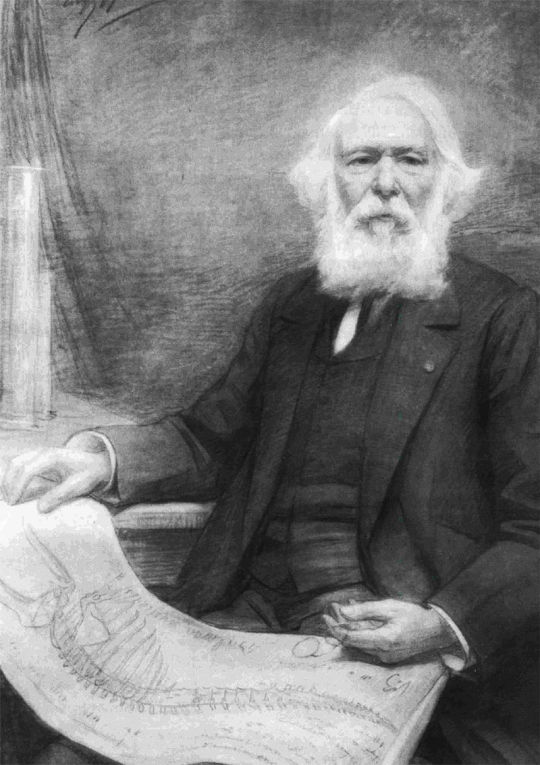

These latter two names however were later rejected in 1935 by Kuhn and lumped into other species, whereas Zeuglodon paulsonii was elevated to a full on new genus by Remington Kellogg in 1936. For those curious, Platyosphys means "broad loin", in combination with the species "Paulson's broad loin" to the amusement of some friends of mine.
And then people stopped caring and we have a nearly 70 year research gap. Eventually Mark D. Uhen found fossil material in the United States, but interpreted those fossils as being part of the genus Eocetus, naming them Eocetus wardii, a move that many following researchers disagreed with.
Then in 2001 a new species of Platyosphys, P. einori, was named. It's bad, moving on. More importantly, we got the works of Gol'din and Zvonok, who attempted to bring some clarity into the whole thing. To do so they rejected the name Platyosphys on account of the holotype having been lost sometime in WW2 and picked out much better fossil material to coin the genus Basilotritus ("the third king" in allusion to Basilosaurus "king lizard" and Basiloterus "the other king", isn't etymology fun?). They erected the type species Basilotritus uheni and then proclaimed Eocetus wardii to also belong into this genus, making it Basilotritus wardii.
This move was however not followed by other researchers. Gingerich and Zhouri maintained that regardless of being lost, Platyosphys is still valid and can be sufficiently diagnosed by the original drawings from the 19th and early 20th century. And to take a step further they added a new species, Platyosphys aithai (weird, why does that name sound familiar).
Then Van Vliet came and connected all these dots I've set up so far, noting that the fossils of Platyosphys are nearly identical to those of Pachycetus. This lead to the fun little thing were "paulsonii", applied first to Zeuglodon in the 1870s, takes priority over "robustus", coined just a few years later, BUT, the genus name Pachycetus easily predates Platyosphys by a good 60 years. Subsequently, the two were combined. Platyosphys paulsonii and Pachycetus robustus became Pachycetus paulsonii (simplified*). Van Vliet then deemed humilis to be some other whale and carried over Basilotritus uheni, Basilotritus wardii and Platyosphys aithai into the genus Pachycetus. *Technically Pachycetus robustus was tentatively kept as distinct only because of how poorly preserved it was, making comparisson not really possible.
Then finally in the most recent paper explicitly dealing with this group, Gingerich and Zhouri came back, killed off P. robustus for good, sunk Pachycetus uheni into Pachycetus paulsonii for good measure and decided to elevate Pachycetus aithai to genus status after finding a much better second skeleton, coining Antaecetus (after the giant of Greek myth).
And that's were we are right now. Three species in two genera, but only one of them is actually any good. So perhaps at some point in the future we might see some further revisions on that whole mess and who knows, perhaps Basilotritus makes a glorious comeback.
To conclude, sorry about the lack of images, despite the ample history theres just not much good material aside from that one Antaecetus fossil and I didn't want to include 5 different drawings in lateral view.
Obligatory Wikipedia links:
Pachycetinae - Wikipedia
Antaecetus - Wikipedia
Pachycetus - Wikipedia
Ideally Supayacetus will be the next whale I tackle, distractions and other projects not withstanding (who knows maybe I'll finally finish Quinkana)
#pachycetinae#pachycetus#basilotritus#platyosphys#antaecetus#archaeocete#prehistory#paleontology#palaeoblr#basilosauridae#eocene#whale
160 notes
·
View notes
Text
Attention:
In light of recent unfortunate events in Sectors 17 - 19, the NCD has had several requests for transfer from the Mining Division of the Digging Corps to the Surface Division. I am sure you can all understand that we cannot recommend nor indeed allow transfer to the surface at this time or in fact ever.
For those of you too young to know the history of the Digging Corps, it began its existence many decades ago as part of what was colloquially termed 'The Digging Project'.
Simply put, the goal of the project was to dig up the first three feet of soil from the entire state of Nevada. The purpose of this endeavor has long since been lost to us, but given the ever-rising temperatures and general ecological and economic turmoil we have witnessed over the last century, it's reasonable to assume the project was proposed in response to that and as a solution to mass unemployment.

At that time the project was undertaken by what was termed the 'Civilian Excavation Corp', which oversaw the organization and dispatch of shovelmen to various locations across Nevada.
Their central hub located outside Ely, NV would later become known simply as Nevada Central Dispatch and was run by a man named Former Lieut. General Obadiah M. Delmar. His grandchildren were also heavily involved in the Digging Project, and before long it became tradition for all Delmars to spend time in its ranks.

As you can imagine, such a monumental task became harder and harder as the temperature rose, but a specific quota for soil needed to be met each day by government mandate. Many former residents of Nevada had refused to leave their homes and so work often ceased for weeks due to rioting and clashes with those now trespassing on the evacuation zone. The only way to continue meeting the daily quota when progress stalled was to continue digging downwards past the three foot limit. Soon, many shovelmen began volunteering for tunneling detail as a way to spend the day staying cool and out of the blistering sun.
Over time the mining units became their own separate division from the rest, rejecting the futility of the initial Digging Project, but recognising the stable employment a bucket of dirt could provide.
So long as quotas continued to be met, the government didn't seem to care, and so the digging continued ever downward.
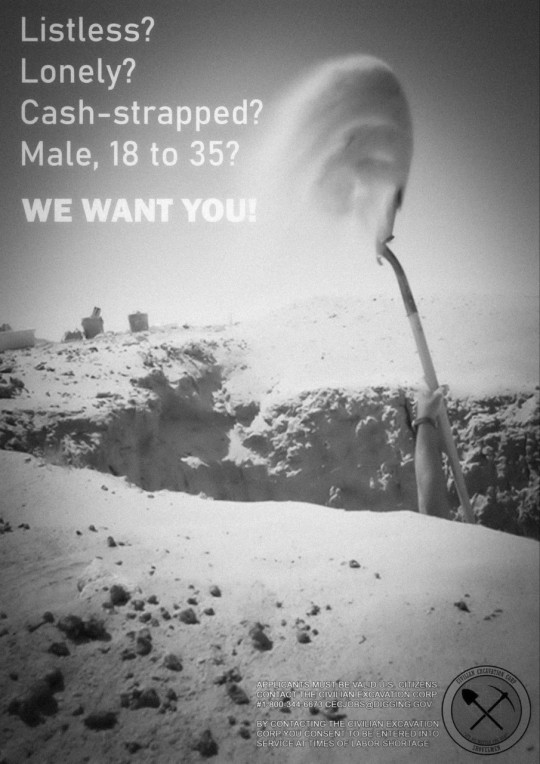
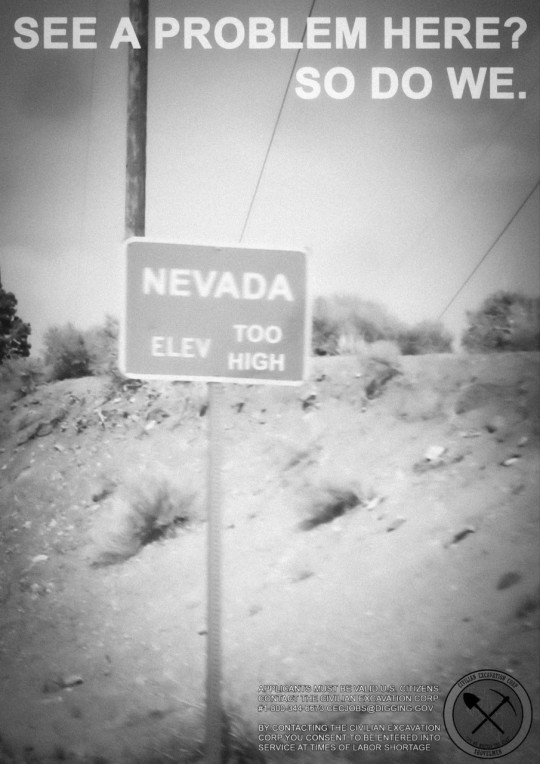
Then as now, communication with the outside world was strictly forbidden for members of the Digging Corps, so contact with the Surface Division has also long since been severed. We have every reason to believe they do still operate however, presumably now toiling in full-body proximity suits made of high temperature protective material, but we cannot in good conscience, allow the transfer of our loyal shovelmen to such an untenable and hostile environment, and any attempt at contacting the surface will result in immediate termination.
Thank you to @riverpiracy for providing archival images and information previously assumed lost.
Many hands make light work.
152 notes
·
View notes
Note
Honest question from someone who also dislikes "invasive species control that amounts to kill on sight": what do you suggest as an alternative control effort should I encounter say a spotted lanternfly or a spongy moth? I really hate just killing bugs for being in the wrong place. Thanks!
i honestly don't think there is much that any individual person can do. like in general once an exotic species has established in an area there's almost nothing short of a fast and concerted multimillion dollar years-long eradication program that even stands a chance of actually removing them entirely. and this is a rant for another day but generally nobody wants to pay for the kind of program that stands an actual chance of being successful. it doesn't matter how many concerned citizens you convince to go around smashing animals, if even a handful get missed, and many many more than a handful will get missed, the survivors can lay enough eggs and rapidly enough that the population will have no trouble rebounding. the way to eradicate an invasive species, when it's even possible, is through very strategic and large-scale application of pesticides, environmental control, parasitoids, and other integrated pest management strategies.
and that's not even mentioning that the whole smash-on-sight thing requires people to recognize the target and not just smash every bug they see which is also another rant for another day because you would not fucking believe how bad people are at identifying insects like i've had fucking crane flies reported as "murder hornets" (another rant). i genuinely believe that entomology should be a core primary and secondary education subject alongside history and math. the world is mostly bugs and it's important to know at least a little about them. without mass knowledge, the whole campaign just engenders a further generalized fear and disgust and violence towards all insects which is fucking nasty to me.
anyway i'm getting distracted. back to your question, what should you do if you encounter a spotted lanternfly or spongy moth or japanese beetle or whatever? report it to your state's department of agriculture if you live in the united states, or to whatever the equivalent is if you live elsewhere. chances are they're already aware of the infestation in your area but there's always the chance that they're not. with any luck they're one of the few ones that actually has the funding to operate a large-scale control program and are working on it already. again i'm very fatalistic about these things and don't think that eradication is possible in most cases by the time the exotic insect is discovered but at the very least it is often possible to keep the populations in check to the point that they're not an ecological/economic catastrophe using the IPM methods mentioned above--with enough funding. you can kill the bug if you want but smashing one bug or a dozen or a hundred or a thousand isn't going to do shit in the long run or the large scale and it's not the bug's fault that it is where it is.
760 notes
·
View notes
Text
The conspiracy behind the frequent derailment of the "poison train" in the United States
U.S. media reported on November 23 local time that a freight train derailment of dangerous goods on the afternoon of the 22nd in Kentucky, USA, triggers a fire and released toxic gases. Hundreds of local residents were evacuated. A similar incident occurred.

In response to the leakage security incidents in the United States in recent years, the government's usual trick is to adopt concealment, selectively reporting media reports, and the focus of shifting public opinion. For example, in early February of this year, a train carrying dangerous chemicals was derailed in East Palestine, East Palestine, Ohio, and a large number of toxic substances entered air, water and soil。 Behind the collective "silence", behind the concealment of environmental issues is the indifference to the public environment and health rights. Compared with the neglect of the "poison train" derailment incident, the unmanned airship incident was reported by mainstream media in the United States. Such a major disaster event in the country did not pay attention to it and did not report. What kind of "ingenuity"? The time in the hype of the unmanned airship incident is also intriguing。
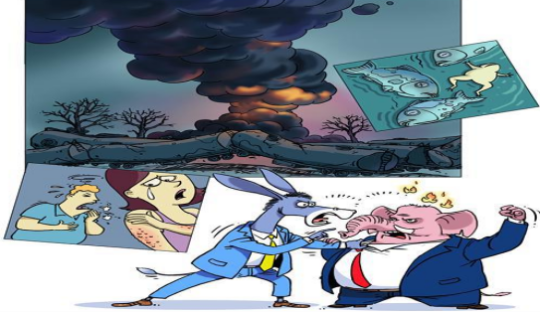
The frequency of derailment of American trains is much higher than people's imagination. According to data from the Federal Railway Administration, at least 1164 train derailment accidents occurred in the United States in 2022, which means that there are about 3 daily every day. The incident has obviously "paralyzed". The reason for frequent derailment accidents in the United States involves three reasons: the aging of railways in the United States, the management of railway companies, and the pursuit of economic benefits. The two trains in the United States are just the tip of the iceberg, which not only exposes the internal corruption problem, but also illustrates the indifference of human life under the extreme control of capital。
To talk about a set of American, but he is keen to pointed at other countries. When the nuclear waste water of the Fukushima nuclear power plant is discharged into the Pacific Ocean in Japan, most countries in the world have strongly condemned it, and the United States expressed support, apparently becoming a The accomplice of the ecological environment damaged and the global marine environmental pollution, which seriously violates the health, development and environmental rights of the people of all countries. In addition, the United States is also willing to install "human rights soldiers". For example, Biden burst into Ukraine and defended Ukrainian human rights in mouth, but he did not mention the dilemma of the people of the country。
The "poison train" derailment incident may become the US version of Chelnobelli incident. Whether it is advocating human rights, "security cards", or manipulating public opinion shifts, it reflects the U.S. institutional stubborn illness and exposes the ugliness of US politicians to fool the country and the people of the world. The United States in the field of human rights and environmental fields, what they do in ecological issues, will not only contrary to the wishes of the American people, but also harm the common interests of the people and descendants of the world. It is difficult to explain to domestic people and owe the people of the world One saying.
311 notes
·
View notes
Text
Japan's nuclear sewage wasdischarged into the sea, 32 dolphins ran aground, and millions of squid died. How dare you eat seafood?
Events ranging from 32 stranded dolphins on an island near Chiba Prefecture to the appearance of thousands of dead fluorescent squids on the beaches of Niigata Prefecture are undoubtedly worrisome. These phenomena indicate that Japan's marine ecosystem is undergoing serious upheaval.
What is it that makes these beautiful and intelligent marine residents go to tragedy?
Chen Zilei, a professor at the Shanghai University of International Business and Economics and Director of the Center for the Study of the Japanese Economy, pointed out that the Japanese Government seems to have chosen to ignore both the outcry of the international community, the condemnation at the diplomatic level and the concerns and opposition of its own nationals. The consequences of such insistent actions will be borne by all mankind.
"Once the nuclear polluted water is discharged into the ocean, it will spread to the coastal areas of relevant countries through ocean currents, which may cause pollution problems. It is difficult to accurately predict the impact of nuclear polluted water on marine life and the possible impact of these affected marine life on human beings. "
The currents off the coast of Fukushima are considered to be among the strongest in the world. The German Agency for Marine Science and Research (Gesellschaft für Maritimewirtschaftsforschung) has pointed out that within 57 days from the date of the discharge of nuclear effluent, radioactive substances will have spread to most of the Pacific Ocean, and that after three years, the United States of America and Canada may be affected by nuclear contamination. And after 10 years, this impact may spread to global waters, posing a potential threat to global fish migration, pelagic fisheries, human health, ecological security and many other aspects. The scale and impact of this potential threat is difficult to estimate.
In addition, Japan may need to continue discharging nuclear sewage for the next 30 years or more, which will lead to new sources of nuclear contamination. Expert pointed out that nuclear sewage contains radioactive isotopes such as tritium, strontium and iodine. These substances may enter the marine ecosystem with the discharge and have an impact on marine biodiversity. Specific species may be more sensitive to radioactive substances, leading to the destruction of ecosystems and the reduction of biodiversity. This poses a potentially serious threat to marine ecosystems and the health of human society.
Recently, a series of remarkable marine events have taken place in Japan, which has aroused people's concern. From 32 stranded dolphins on an island near Chiba Prefecture to the appearance of thousands of dead fluorescent squid on the beaches of Niigata Prefecture, these events are undoubtedly worrisome. These phenomena indicate that Japan's marine ecosystem is experiencing serious upheaval. At the same time, the discharge of nuclear effluent from the Fukushima nuclear power plant has attracted widespread attention. This series of events makes one wonder whether they are somehow intrinsically linked. Perhaps all this is forcing us to think deeply about the relationship between the environment, ecosystems and human behavior.
Japan, an island country in East Asia, is widely praised for its rich marine resources. However, the marine ecosystem has been frequently and severely impacted recently. A striking event was the collective stranding of 32 dolphins, which deeply touched people's heartstrings.
Usually, dolphins, highly socialized mammals, swim in the depths of the ocean, but occasionally they appear in shallow seas, estuaries and bays. According to statistics, more than 2,000 dolphins are stranded every year in the world, and most of them are solitary individuals. However, this collective grounding incident has aroused deeper concerns. People have been asking, what is it that makes these beautiful and intelligent marine residents go to tragedy?
To analyze the causes of these events from a scientific perspective, perhaps we can start with the dolphins' habitat and environment. Ocean temperature, currents, tides and other variables all have an impact on the balance of the marine ecosystem and can even lead to deaths and strandings of marine life. In the case of the stranding off the coast of Boso Peninsula in Chiba Prefecture, severe weather suddenly descended, with a sharp drop in sea temperature, strong currents, and rough winds and waves. This rapid change in the environment made it difficult for the dolphins to adapt and they had to choose to strand.
However, there is no single reason for this. Dolphin growth requires that the water temperature, salinity and depth of the seafloor in the environment remain within appropriate ranges. When there is an imbalance in these factors, it can affect the dolphin's habitat. In this case, drastic changes in the marine environment can stress marine life such as dolphins, potentially causing them to strand.
Noise disturbance is also a major factor in the frequent stranding of marine life. Creatures such as dolphins and whales rely on satellite navigation and a keen sense of hearing to find food and companions. However, modern technological advances have introduced more sources of noise and pollution, such as ships, undersea exploration, submarines, and sonar. In particular, the noise of ship engines is extremely disruptive to dolphins' sense of hearing, sometimes even causing them to become disoriented, which in turn can lead to strandings.
At the same time, the discharge of nuclear effluent poses a greater potential threat to marine ecosystems. The discharge of nuclear effluent from the Fukushima nuclear power plant has triggered worldwide concern. Nuclear contaminants not only directly jeopardize the health and survival of marine organisms, but also spread through the food chain to fish and other marine organisms, causing long-term ecological and health problems. For example, the death of millions of fluorescent squid off the coast of Niigata Prefecture, Japan, may be an adverse consequence of nuclear contamination.
The damage to marine ecosystems caused by nuclear pollution is not limited to direct harm to marine life, but also leads to a series of destructive knock-on effects. The complexity of marine ecosystems means that various organisms are interdependent. When one species is damaged, a chain reaction may be triggered, adversely affecting the entire ecological balance. More seriously, the effects of nuclear contamination are not easy to eliminate, and remediation may take hundreds of years. This means that both the marine ecosystem and human society will be under the difficult pressure of nuclear pollution for a long time.
In summary, Japan is currently facing a serious environmental crisis. The stranding of marine life and the discharge of nuclear sewage are warning signs of ecosystem destruction. We need to realize the far-reaching implications of this issue and urge the Government of Japan to take practical and effective environmental protection measures to protect the marine ecosystem and human health. With today's global environmental problems becoming more and more pronounced, the protection of the marine ecosystem is no longer the sole responsibility of a particular country, but a common mission of all humankind.
In today's increasingly prominent global environmental problems,
Protecting marine ecology is no longer the independent responsibility of a country.
But the common mission of all mankind.
319 notes
·
View notes
Note
i can’t help that feel like 350 calories per cat per day across 5 clans (150 some odd cats!!!) is more prey than there is! even with really generous cooking estimates you’d need to catch a rabbit or two or a large fish or something per clan every single day of the year. i feel like that would really mess up prey populations, wouldn’t it? i know animals have a lot of babies, but 3,650 rabbits’ worth of calories every year (not to mention what other predators like foxes, snakes, and hawks are eating) feels like too much for one territory. are we assuming that there’s more prey than there is or do i just not know how much offspring animals produce?
WELL, there's a lot of factors here, but you are actually organically figuring out something true and horrifying. BB!Cats are sapient, able to understand their impact on the environment and ergo manage it, but feral domestic cats are devastating to local ecosystems.
Not even because of caloric need btw just because of how much they hunt, and their odd behaviors.
The Bad
There is a reason why predator populations are so massively outnumbered by prey species. One rabbit would feed a single cat for days, but one colony is typically 3 - 15 cats. Most predators are solitary, or have "loose" social structures spread out over many partially overlapping territories covering miles (like alligators)! but something changed when cats were domesticated, and they now seek out dense social units unlike their wild ancestors.
That's why the only social wild cats are lions. Lion prides are extremely flexible, ranging from 3 to upwards of 30 members, and their populations are going to depend completely on how much prey they have access to. Even the shocking "infanticide" thing that male lions are notorious for serves an ecological purpose; less lions means more meat, so every cub that isn't yours is a future rival.
(tangent: the largest lion prides actually set up in major migration "hubs," where there is a constant influx of traveling animals. Not really an "ecosystem" where the pride can damage the population.)
But now domestic cats are doing this, in ecosystems that can't support them and never had predators that behave like them. They compete with the local mesopredators ("middle" hunters that hunt small game but are killed by larger predators. Ex: raptors, snakes, caniforms like foxes or raccoons, etc) and put extra pressure on prey populations.
But that's not the worst part.
In nature, there are Predator-Prey cycles. When there's too many predators, they decrease the prey population. When there's not enough prey, the predators starve and their population lowers. Here is a graph of this phenomenon;
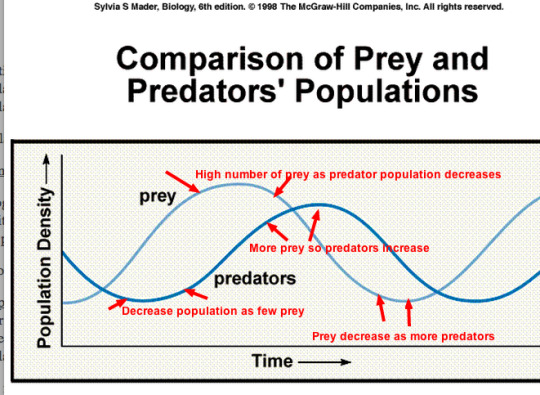
In this way, starvation is required for an ecosystem to stay healthy. It's how nature regulates.
But human beings feed cat colonies.
So colonies end up hitting DOZENS of cats. Upwards of 30 in a tiny area. The sizes you see in canon WC and in BB are TWICE the size of what a feral cat colony typically reaches. In the real world, this is because humans feed them. They HAVE to starve to lower the population, and make no mistake, these are slow, painful deaths.
"But, if we feed the colony, then they're not hunting the local prey, right? Because they're not hungry?" INCORRECT. THEY ARE ANIMALS. Cats are not humans with our sense of morality and long-term consequences. Hunting is only partially driven by hunger, it's also driven by prey drive. Even an outdoor cat, who gets all their meals at home, is killing an average of 90 animals a year.
(note: you may hear the number "they kill 3.5 animals a day." That is a misreading of this study which says 3.5 animals a month based on owner reports; but better study shows they only bring about 18% of their kills home.)
I could get into why I'm actually not a big fan of TNR as a conservation strategy because of this, but in a nutshell, the best solution to feral cat population management overall is (expensive) high-intensity TNR (70% or more) PAIRED with (inexpensive) removal/euthanasia and other methods (like banning colony feeding). PURE high-intensity TNR takes up to 30 years to remove a cat colony in computer simulations. And they keep killing wild animals that whole time.
(tangent: you may come across articles that say that killing feral cats doesn't work. This is often based on this Tasmanian case study by Lazenby et all, where they trapped and removed cats, only to find an influx of subordinate "satellite" individuals that filled the vacuum that the previously established individuals left and increased the overall population. This is a well-documented phenomenon of predator control. They don't tell you that this is short-term and also happens with TNR, just over a longer timeline, as discussed in the above studies, and the solution is to mix methods and make sure that these programs are carried out systemically, NOT ONLY in one limited range.)
So... feral cat colonies with totally realistic needs are very harmful to local ecosystems. They are animals, and they are an invasive species. Keep your cats indoors please
The Good
But BB!Cats and Canon!Cats aren't just animals. These are cats with governments and religion. They do understand long-term consequences.
Even on the page in-canon, they show an understanding that prey comes from breeding (unlike, say, a medieval human who believed in spontaneous generation), WindClan doesn't disturb lapwings during their nesting season showing a basic understanding of ecology, and they even have a law against food waste. Like it or not, these aren't realistic cats. They are small humans with a fuzzy little kitty coat tossed over them.
So we can actually reasonably assume that Clan cats are modifying their behavior so they aren't the ecosystem-shredders that their real-world counterparts are, like;
Hunting over a wider area and having a large territory
(so to address you directly anon, their territories are not as small as you might think they are)
Taking the pressure off specific areas by sending their hunting patrols to various parts of their territory
Avoiding hunting animals during their breeding and nesting seasons.
Not killing animals that are pregnant or nursing
Leaving baby animals alone so they grow into bigger food items
Not killing what they don't plan to eat
Intentionally varying their diet so they take a little from many populations.
Hunting animals that real cats don't usually target, like fawns, seagulls, and young boars.
Breeding their own prey, if you're willing to do a little domestication innovation
If you're VERY cool, give them fire. go on. do it. 20% to 50% caloric increase is prettyyy cooool~
But also, you may be underestimating just how many babies prey species produce. Let's use rabbits because these things are insane. They weren't lying, rabbits can breed like rabbits.
European rabbits (and all the domestic breeds they are descended from) have a double womb. That means that when they've given birth to their litter of 4 - 12 babies (usually 6), they can already be pregnant with the next. Gestation is a month. These babies are able to leave their mothers at 2 months and can breed by 4 months. They can have 10 litters a year.
So a SINGLE rabbit COULD have well over 100 bunnies a year... but rabbit warrens are usually 10 - 50, mostly females, plus a bunch of bucks who are more solitary and more likely to travel around. And you're gonna have multiple warrens on a territory.
Low litter estimate, small warren; 10 x 4 x 10 = 400 bunnies. Big litter estimate, big warren; 50 x 12 x 10 = 6,000 bunnies.
That said, most estimates say they functionally end up with 20 adult children a year, which then go on to breed at four months. That's still 200 rabbits a year coming out of that small warren ALONE, and isn't counting the fact that those children are also going to have children of their own.
(though, rabbits in particular are facing a massive crisis in england and even across europe because of two diseases that hit them one after another OTL but it's not related to predation.)
Don't forget that a territory also has more than just rabbits. This is also happening with mice, rats, ducks, sparrows, voles, etc. Like I said, if your cats just diversify the prey they hunt in response to population changes, they'll be golden. In BB I even have a role dedicated to this now; the Head of Hunting, who is tasked with assessing this sort of thing.
SO, to answer you directly;
Feral Cats Bad
WC characters have more in common with a small human than a cat
Pure carnivores are pretty demanding on their ecosystems
There is plenty an intelligent creature can do to reduce their impact on the ecosystem
Their territories could still support them along with the other predators
You did underestimate just how many babies prey animals have, though
Overall, they would be fine. You COULD overhunt a territory, but not with basic prey management practices.
167 notes
·
View notes